'Dr Singh, visibly relieved, said, 'Yesterday night I couldn't sleep. I stayed awake, praying throughout. You have saved the country'.'
A fascinating excerpt from former Atomic Energy chief Dr Anil Kakodkar's memoir Fire And Fury: Transforming India's Strategic Identity.
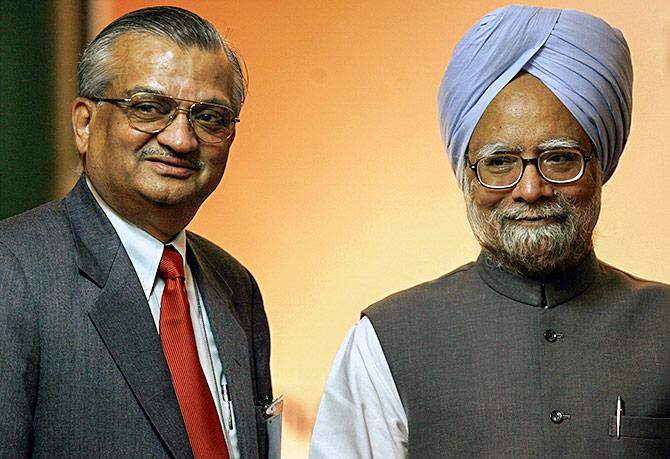
I knew Prime Minister Dr Manmohan Singh was scheduled to visit Washington.
From messages that were being exchanged around, I had sensed that something related to nuclear would come up during the visit.
India and the USA seeking to develop civil nuclear cooperation was a huge tectonic shift in international politics.
This was in complete contrast with the decades of efforts to deny any nuclear commerce to India.
Even though I was in favour of developing this co-operation from an energy perspective, I was more concerned with preserving and ensuring protection of India's strategic autonomy, which was under serious threat.
The issue of strategic autonomy was crucial for both our weapons programme and sustained development of our three-stage nuclear programme.
I was carefully looking at every word in the proposed formulations from this perspective.
Ironically, thus, I myself had to apply brakes on what I had been patiently working on for many years as there could be no compromise on our strategic autonomy.

There was a section that felt that this was a lifetime opportunity for India that should not be missed at any cost.
I thus began to look like a villain, coming in the way of a great deal for many in both countries.
We had defined red lines that nobody could be allowed to cross.
I was convinced that the Americans needed us much more than we needed them, and that the deal would go through.
On reaching Washington the evening of the day before the summit, there was an internal meeting at the hotel we were staying in to take stock of the state of play till that time.
Among those present were Dr Singh, Foreign Minister Natwar Singh, Minister of State Prithvi Raj Chavan, NSA M K Narayanan, Foreign Secretary Shyam Saran, Ambassador Ronen Sen and other members from the PMO and MEA.
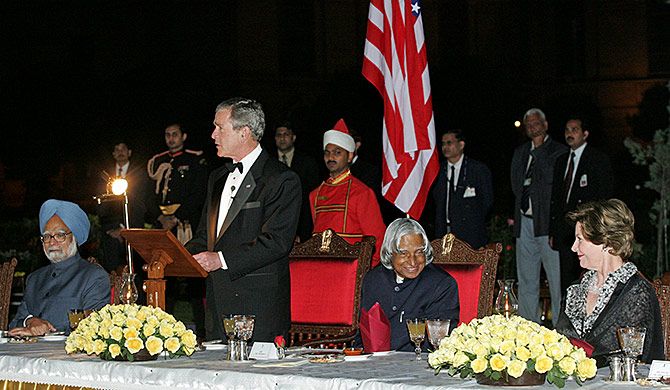
The draft statement as it existed till that time was being discussed.
There was a strong opinion that this was an important and historic opportunity and we should not let it go.
The prime minister sought everybody's opinion.
Everyone was either in strong or cautious support.
I was the last to be asked.
When my turn came, I had to bring out inherent risks.
I explained that we couldn't open up cooperation in certain areas of the nuclear programme that impacted our strategic programme as well as the evolving three-stage programme, and risk their becoming vulnerable to external constraints.
Such programmes had to be completely insulated.
We could accept cooperation for facilities, which we could place under IAEA safeguards with the assurance of uninterrupted lifetime supplies.
Our experience with Tarapur had to be kept in view and adequate safeguards ensured.
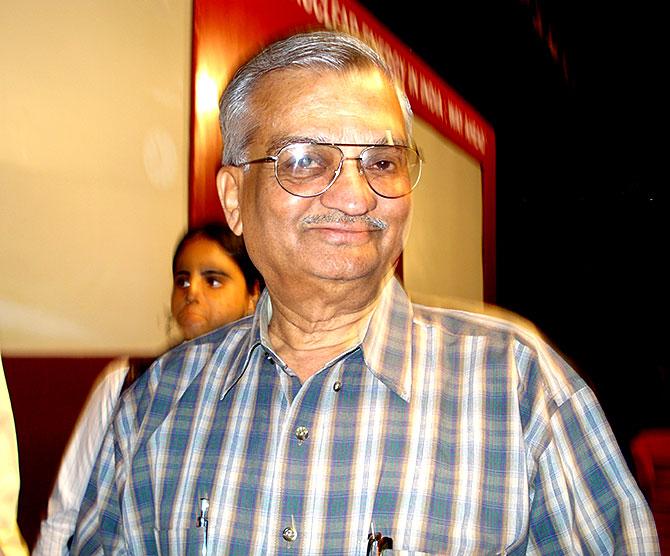
As the formulation on the table did not meet these expectations, I did not support the text and expressed the need for further changes to make it satisfactory from our point of view.
I was in favour of the cooperation but the proposed draft was not acceptable.
The moment I said that, several seniors pounced upon me.
'Atomic energy is not the only concern; you have to think about the country.'
Finally, the PM said, 'If Kakodkar says no, then we can't go ahead.'
I remember Natwar Singh reprimanding me right in front of the PM.
Ronen Sen (who was in DAE for a short while a long time back, and was closely involved with several nuclear diplomatic engagements in the past) began talking like an expert in atomic energy and tried to negate my serious reservations.
I was being singled out as the fall guy.
All this was very painful.
However, diplomats on both sides continued working through the night to make the text mutually acceptable.
The next morning, even as the formal programme was about to start, I was called by the PM.
Natwar Singh was also present.
The text was still not acceptable.
Natwar Singh then asked me to write down the formulation that would be acceptable.
I scribbled it on a paper napkin lying on the table.
He took the paper, folded it, put it in his pocket and went for the meeting.
Things were going down to the wire.
At lunch, MEA officials showed me the latest draft.
The text was now acceptable and I said so.
After the draft was finalized, news broke out about the joint statement.
With the job done, the delegation was to return to Delhi.
I wanted to fly back directly to Mumbai.
I went to see Dr Manmohan Singh and take leave.
Dr Singh, visibly relieved, said, 'Yesterday night I couldn't sleep. I stayed awake, praying throughout. You have saved the country.'
I naturally felt very comforted given the onslaught that I had suffered.
It was clear that implementation of all elements embedded in the joint statement could happen only on the basis of treating India like a nuclear weapon state, even though nobody would say so explicitly.
This was a tectonic shift.
Consequently, there were major challenges ahead -- both nationally and internationally.
Soon the tussle started.
Negotiations with the US were the toughest.
They spanned a wide range of issues covering different actions envisaged in the joint statement.
Aligning the new expectations and the legal framework of both countries was a major challenge.
On the US side, the prevailing framework had deep connotations of the post-1974 non-proliferation web that has been created.
Changing that to accommodate the new reality in the backdrop of the political environment that existed was a challenge.
There could also be an underlying current of leveraging new arrangements to maximise control on the Indian programme.
On the Indian side, the challenge was to insulate the strategic programme as well as the emerging development activities from any external control.
Further, there was this aspect of protecting the assets within the purview of cooperation, should the cooperation breakdown for some reason.
We had the experience of Tarapur units 1 and 2 suffering following the 1974 PNE experiment.
Here we were talking of a much bigger engagement, and so the risks were bigger.
A diverse and multi-layered sourcing arrangement, especially for uranium, had to be ensured.
All this was to be consistent with the national foreign policy related to nuclear issues.
It was Narayanan's idea that the two of us would not sit on the negotiating table, but be constantly available for guidance.
This allowed us to do somewhat relaxed reflection on the proceedings that were taking place and carry out any mid-course corrections that might be necessary.

The primary interlocutors were Shyam Saran and Nicholas Burns.
Whenever it was needed, the two NSAs, Narayanan and Stephen Hadley, met.
Narayanan and I stayed back in our rooms in the hotel while the negotiations were in progress.
Every two or three hours, a new draft would arrive, and we would all meet to discuss it.
It was a long-drawn battle but the strategy was very useful in making our negotiations robust.
Developing the Separation Plan needed deep and careful thinking.
It had to be ensured that the decision of what was civil and what was military would remain exclusively an Indian decision, in the present and the future.
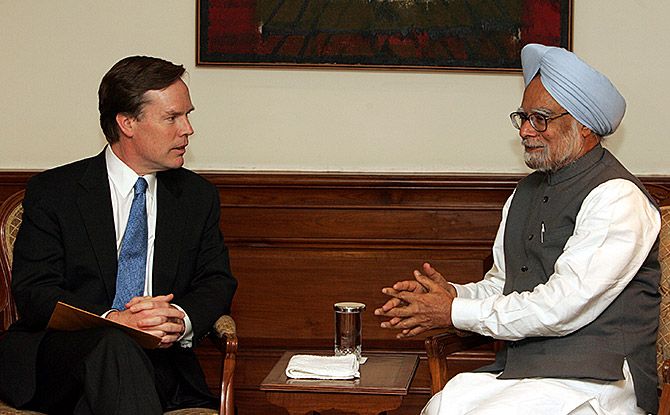
The prime minister showed considerable foresight and statesmanship in taking such a decision.
Getting the Americans to accept the Separation Plan and related provisions was an even bigger task.
I was clear that we were negotiating from a position of strength and the proposal would go through.
As expected, things went down to the wire once again and the negotiations were still on even as it was time for President Bush to arrive in New Delhi in March 2006 for the next bilateral summit, just around nine months after the Washington joint statement.
When the negotiations were passing through rough weather due to differences on contours of the Separation Plan, I was amused with the name-calling that happened during that time.
The bone of contention was reprocessing -- whether to include or exclude it.
Everybody in New Delhi seemed to be fine with the elements of the agreement, but the only hurdle was Anil Kakodkar.
They were unable to understand why I was taking a negative stand on demands that were being made for inclusion in the Separation Plan.
I told them it was my responsibility to develop and steer the atomic energy programme in India.
PHWR (pressurised heavy-water reactor) development was not the end of that mission.
It was the beginning.
There were many more new technologies, not existing anywhere, particularly in the context of our long-term interests in thorium, that had to be developed.
I could not be doing that with the IAEA inspectors breathing down my neck.
When we were doing something new, we would naturally need mid-course corrections.
Something would work.
Something would not.
If we were under IAEA safeguards and made even a small deviation, we would be accused of doing something that was not in the agreed plan.
R&D can never be done like that.
Two days prior to the President's arrival, the US team was in New Delhi to finalize the text of the Separation Plan.
We were negotiating in South Block right till 2 am on the night before President Bush was to arrive.
Firmness paid off.
The US team conceded to our demands.
The next morning, there was the formal meeting at Hyderabad House.
By that time, I was already being perceived as a difficult nut to crack.
When I was introduced to President Bush, he asked, 'So, you are that Kakodkar. Are you happy?'
I replied in the affirmative.
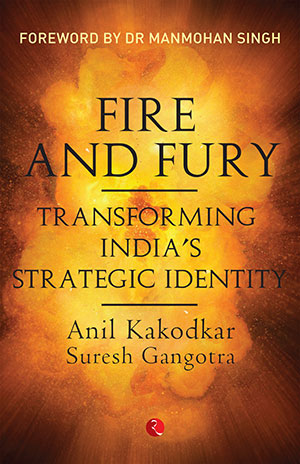
Excerpted from Fire And Fury: Transforming India's Strategic Identity by Anil Kakodkar and Suresh Gangotra with the kind permission of the publishers, Rupa Publications India.








